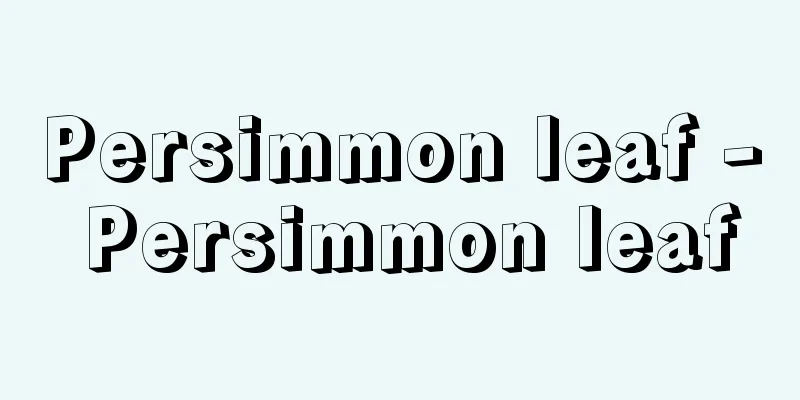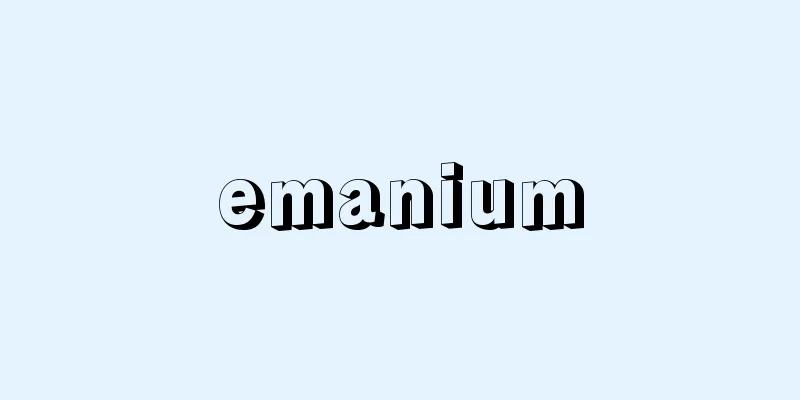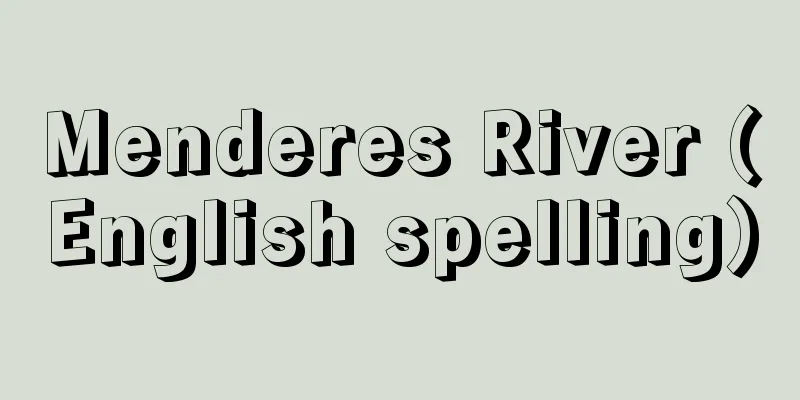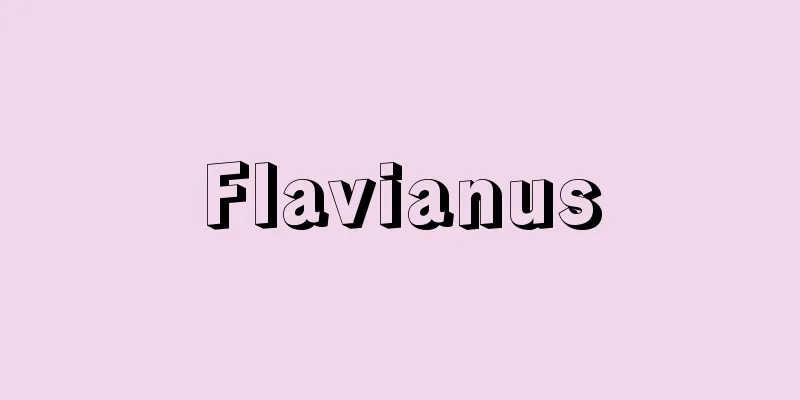Soda industry
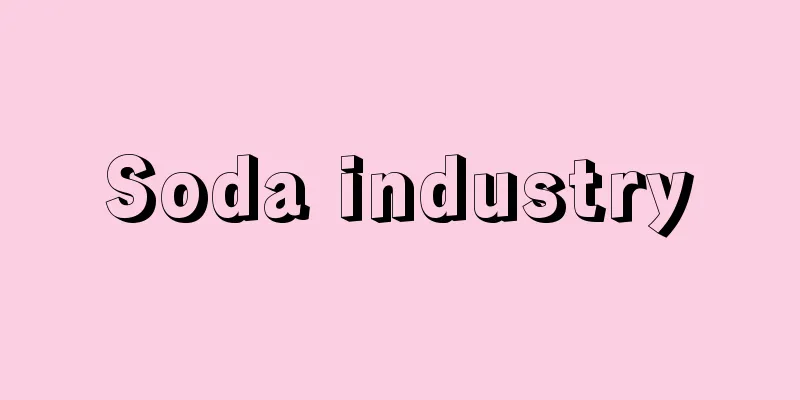
|
A basic materials industry that uses salt as a raw material to produce soda ash (anhydrous sodium carbonate), caustic soda (sodium hydroxide), chlorine, and various chlorides. As most of the alkaline raw materials are soda products, it is generally considered to be the same as the alkali industry. The main raw material, rock salt, is entirely imported, and the electrolytic soda industry, which uses the electrolysis of salt water, is an energy-intensive industry that consumes large amounts of electricity and heavy oil. In Japan, the main uses are that more than half of the soda ash is used as a raw material for glass products and plate glass, as well as for the manufacture of inorganic chemicals and oil and fat products, caustic soda is used as a raw material for soap and detergents, chemical fibers, aluminum, and other industrial chemicals, and chlorine is used to manufacture vinyl chloride, chlorine-based solvents, and pharmaceuticals, and to disinfect tap water, etc. [Shinichi Tonomura] HistoryThe use of soda in Europe began with the addition of natural soda or wood ash to dye wool and to produce cleaning soap. In the 18th century, the demand for soda in soap and other chemical industries expanded, and in 1791, N. Leblanc of France developed a method to make soda ash from salt (Leblanc process), and in 1861, E. Solvay of Belgium developed the ammonia-soda process (Solvay process), which is still used to produce soda ash. In 1890, Germany developed an electrolysis method to produce caustic soda, chlorine, and hydrogen by electrolysis of salt water. There were two electrolysis methods: the diaphragm method (NaOH purity 96-97%) and the mercury method (purity 99% or more). The mercury method, which produces high-purity caustic soda, became common after World War II, but the ion exchange membrane method, which was put to practical use in the 1970s and is energy-saving and environmentally friendly, is currently the mainstream. [Shinichi Tonomura] Japan's soda industryIn Japan, the Leblanc process was first adopted by the Printing Bureau of the Ministry of Finance (now the Ministry of Finance) in 1881 (Meiji 14) in order to domestically produce soda for pulp, but it was not until after World War I that full-scale production began in the private sector. Led by the development of the rayon industry, which was industrialized in 1918 (Taisho 7), the Solvay process became mainstream, mainly for the production of caustic soda for rayon, and in 1939 (Showa 14), the total production of soda ash and caustic soda reached 700,000 tons, the highest level before the war. After World War II, the soda industry, which exceeded the prewar level in 1954 (Showa 29), actively switched to the electrolysis process (mercury process) from around 1958, which could also produce chlorine for the petrochemical industry, and ten years later, production of caustic soda using the Solvay process disappeared. Caustic soda production also increased rapidly, reaching 3.11 million tons in fiscal 1973. Although production subsequently stagnated due to the slump in related industries and rising energy costs caused by two oil crises, it gradually increased to 2.79 million tons in 1982, 3.07 million tons in 1984, 3.85 million tons in 1994, and 4.37 million tons in 2003. Japan produces approximately 11% of the world's oil (2000), ranking second in Asia after China. As the Kumamoto Minamata disease (organic mercury pollution) became a social issue in the 1970s, it became clear that inorganic mercury discharged from the mercury-based caustic soda production process was just as dangerous as organic mercury, and that mercury contamination of fish was occurring over a wide area. In May 1973, the Mercury Pollution Countermeasures Promotion Council decided to switch from the mercury method to the diaphragm method, and instructed the industry to complete this by the end of fiscal year 1978 (first production method conversion). However, because the diaphragm method was inferior in terms of quality, the conversion was completed at only two-thirds of the total production capacity by the end of fiscal year 1976. The Ministry of International Trade and Industry (now the Ministry of Economy, Trade and Industry), waiting for the practical application of the ion exchange membrane process, which could produce caustic soda of the same quality as the mercury process, ordered the complete conversion of remaining mercury process equipment to the ion exchange membrane process in 1979 (the second production process conversion), and made it mandatory to complete the production process conversion work or to completely dispose of mercury process equipment by June 1986, which led to the conversion to the ion exchange membrane process. As of 2002, there are 24 soda industry establishments (according to the "Industrial Statistics Table": establishments with 4 or more employees). As a low-value-added process industry, in order to escape from the low profitability and management burdens caused by changing manufacturing methods that are specific to resource-intensive industries that consume large amounts of electricity and raw salt, the industry is under pressure to develop even more energy-efficient electrolysis technology than the ion-exchange membrane method, develop high-value-added products such as fine chemicals, and diversify into other chemical fields. [Shinichi Tonomura] "'Chemical Industry Yearbook' Annual Editions (Chemical Industry Nippo)" [Reference items] | | | | | | | | | |Source: Shogakukan Encyclopedia Nipponica About Encyclopedia Nipponica Information | Legend |
|
塩を原料として、ソーダ灰(ばい)(無水炭酸ナトリウム)、カ性ソーダ(水酸化ナトリウム)、塩素および各種塩化物を生産する基礎素材産業。アルカリ原料の大部分はソーダ製品であるので、一般にはアルカリ工業と同一視されている。主原料の岩塩は全量輸入に依存し、塩水の電気分解による電解ソーダ工業は電力と重油を大量に消費するエネルギー多消費型産業である。わが国では、おもな用途として、ソーダ灰は半数以上がガラス製品・板ガラスの原料に用いられ、その他無機薬品や油脂製品の製造等に、カ性ソーダはせっけん・洗剤、化学繊維、アルミニウムの原料、その他工業薬品の製造等に、塩素は塩化ビニルや塩素系溶剤、医薬品の製造、その他水道水の殺菌等に利用されている。 [殿村晋一] 沿革ソーダの利用は、ヨーロッパでは、羊毛の染色や洗浄用せっけんの製造に天然ソーダまたは木灰を加えたことに始まるが、18世紀に入るとせっけんやその他の化学工業におけるソーダ需要が拡大し、1791年フランスのN・ルブランが食塩からソーダ灰をつくる方法(ルブラン法)、1861年にはベルギーのE・ソルベーがアンモニアソーダ法(ソルベー法)によってソーダ灰とカ性ソーダの製造法を実用化し、ソーダ灰製造では現在でもこの方法によっている。1890年にはドイツで塩水の電気分解によってカ性ソーダ、塩素、水素を製造する電解法が開発された。電解法には従来隔膜法(NaOH純度96~97%)と水銀法(純度99%以上)があり、高純度のカ性ソーダが得られる水銀法が第二次世界大戦後一般化したが、現在は1970年代に実用化した、省エネルギーで環境に配慮されたイオン交換膜法が主流である。 [殿村晋一] 日本のソーダ工業日本では、パルプ用ソーダの国産化のため、1881年(明治14)大蔵省(現財務省)印刷局でルブラン法が採用されたのが最初であるが、民間で本格的生産が始まるのは第一次世界大戦後のことである。1918年(大正7)に工業化されたレーヨン工業の昭和初期の発展に導かれ、レーヨン用カ性ソーダ生産を中心にソルベー法が主流を占め、39年(昭和14)にはソーダ灰・カ性ソーダ合計で70万トンの戦前最高水準を記録した。第二次世界大戦後、54年(昭和29)に戦前水準を突破したソーダ工業は、58年ごろから石油化学工業用塩素を併産できる電解法(水銀法)への転換を積極的に進め、10年後にはソルベー法によるカ性ソーダの生産は姿を消した。カ性ソーダの生産量も急増し、73年度には311万トンに達した。その後二度にわたる石油危機による関連産業の不振とエネルギー・コスト上昇により、生産は低迷したが、82年には279万トン、84年には307万トンと漸増し、94年(平成6)385万トン、2003年437万トンと生産量は伸び続けている。世界のおよそ11%を生産(2000)し、アジアでは中国に次いで2位である。 1970年代にかけて、熊本水俣(みなまた)病(有機水銀公害)が社会問題化するなかで、水銀法によるカ性ソーダ生産工程から排出される無機水銀も有機水銀に劣らぬ危険性をもち、広範囲で魚の水銀汚染が生じている事実が明らかにされた。73年5月、水銀汚染対策推進会議は、水銀法から隔膜法への製法転換を決め、78年度末までにこれを完了するよう業界に指示した(第一次製法転換)。しかし、隔膜法が品質面で劣るため、製法転換は76年度末までに全能力の3分の2の転換が完了したにとどまった。通商産業省(現経済産業省)は、水銀法と同品質のカ性ソーダを製造できるイオン交換膜法の実用化を待って、79年に残存水銀法設備のイオン交換膜法への全面転換を指示(第二次製法転換)し、86年6月までに製法転換工事完了ないし水銀法設備の全面廃棄を行うことを義務づけ、イオン交換膜法への転換が進んだ。 2002年現在ソーダ工業の事業所数は24(『工業統計表』従業者4人以上の事業所)あり、付加価値の低い装置産業で、電力・原塩の消費量の多い資源エネルギー多消費型産業に特有の低収益性と製法転換による経営負担から脱却するため、イオン交換膜法よりもさらに省エネルギー型の電解技術の開発やファインケミカル等高付加価値製品の開発、他の化学分野への経営多角化などの必要に迫られている。 [殿村晋一] 『『化学工業年鑑』各年版(化学工業日報社)』 [参照項目] | | | | | | | | | |出典 小学館 日本大百科全書(ニッポニカ)日本大百科全書(ニッポニカ)について 情報 | 凡例 |
Recommend
Tales from around the country - Tales from around the country
This is a kodan (traditional storytelling) with th...
Pleuronectidae
…General term for fish in the family Pleuronectid...
Odense University - Odense University
...The old town on the left bank of the Odense Ri...
Guatemala - Guatemala (English spelling)
A country in central Central America. Its officia...
Leach, Bernard (Howell)
Born: January 5, 1887 in Hong Kong [Died] May 7, 1...
Sujikiri - Sujikiri
A farm tool used to make ridges in the field when ...
Flint, LH (English spelling) FlintLH
…In outdoor plants, a large portion of phytochrom...
Hungry ghost
〘Noun〙 (Translation of preta. Transliterated as 薜茘...
Clavius - Christoph Clavius
1537‐1612 German-born Italian mathematician and as...
Jakob Burckhardt
Swiss historian and cultural historian. Born in B...
Administrative Scriveners Act
…This is roughly equivalent to the traditional sc...
Electrophoretic deposition
Applying various coatings to electrode metals usin...
Willigermus - Willigermus
…The upper exterior is surrounded by a gallery wi...
Open covering - Kaihifuku
… If every element of X belongs to some A λ , the...
Subarachnoid space
…The arachnoid mater is a thin membrane without b...



